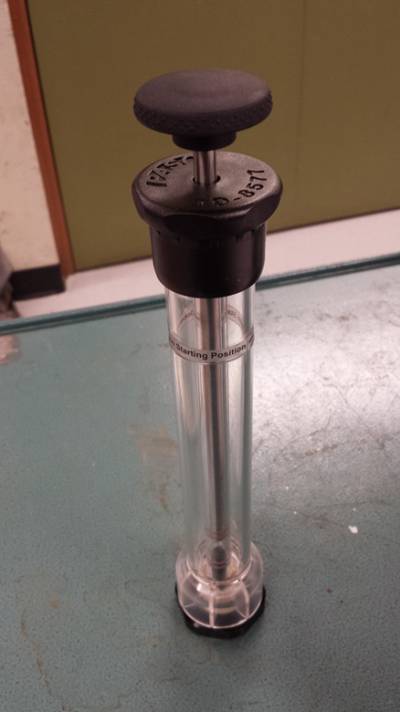Table of Contents
Compression Igniter
Description
Consists of a glass tube mounted inside a bigger plastic tube. A brass screw fitting is installed in the bottom so a metal base can be screwed in. A plunger with a seal at the end is inserted into the top of the tube.
Purpose
Light a piece of tissue on fire via (approximately) adiabatic compression of gas. Demonstrates an example of one type of thermodynamic process. Shows how the ideal gas law can be used to predict what happens when a volume of air is rapidly compressed. Additionally can be used to demonstrate the flash point of cotton; certain materials spontaneously ignite when exposed to sufficiently high temperatures.
Apparatus
- Compression igniter
- tissue or cotton (Very small pieces of cotton ball seem to work best.)
Setup
- Place a small piece of flammable material1) in the glass tube by unscrewing the bottom platform. You can also drop it into the top and use a ramrod to push it down.
- Before screwing the platform back, ensure the piston/plunger is at the top of the cylinder (The ideal spot is marked with a line), then screw the platform back while holding the plunger at the line.
- Push down quickly with a significant force.
- If the demo is to be done more than once, remove the plunger and base platform, and then push a piece of tissue through the glass tube with the wire to clean it between each attempt.
Currently there are three compression igniters available, two newer professional models, and one cheap blue plastic model.
Notes
If the plunger is not pushed fast enough, the tissue will smoke but not ignite. If you haven't used this demonstration before it's highly recommended that you test it out beforehand, particularly if you're attempting to ignite a new material.
Demo room information
| Location | C3 |
| Maker | Unknown |
| Current State | Working |
